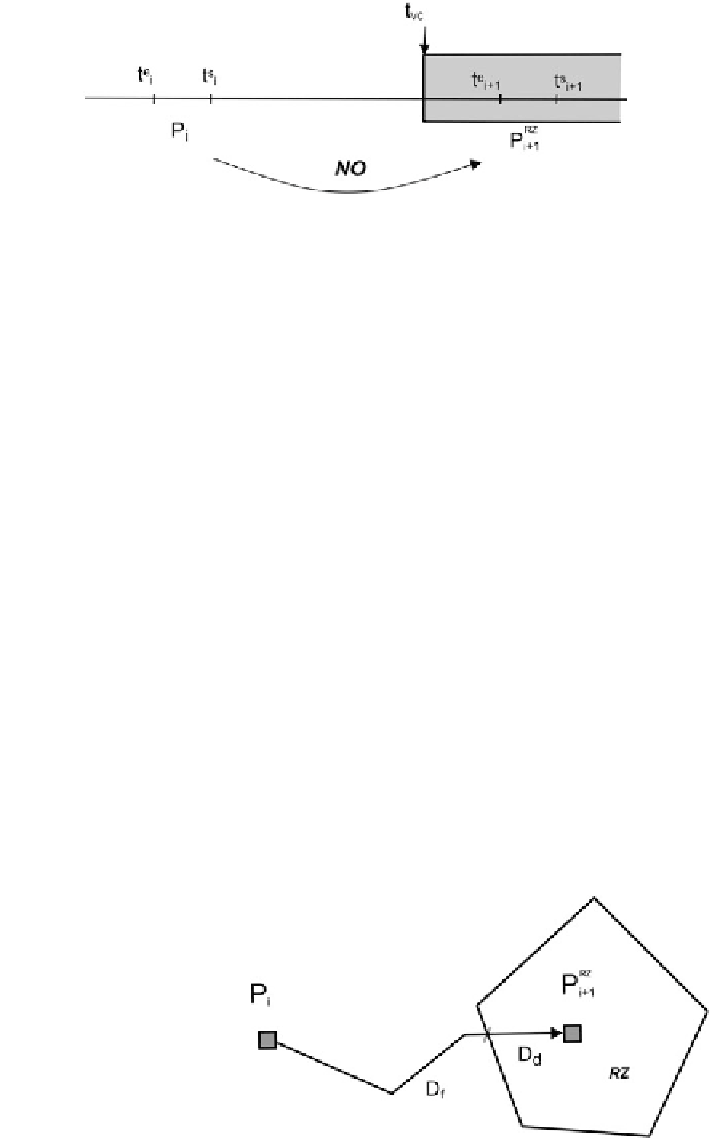Environmental Engineering Reference
In-Depth Information
Fig. 5
Representation of the entry to the restricted zone when the time window is closed
considerations, and the procedure followed in each case, are described in the
following sections.
2.2.2 Entering the Restricted Zone
This is the case of traveling from customer i, located outside of the restricted zone
RZ, to customer i
þ
1, located inside. Several different situations can appear in this
case, depending on whether the time window is open or closed. If the time window
is open at the time of arrival at customer i
þ
1, t
i
þ
1
, the procedure is identical to
the general case, since the time window does not affect the displacement.
However, if the time window is closed at t
i
þ
1
, the displacement is unfeasible
(see Fig.
5
), and the distance (in time units) covered between both customers'
needs to be divided (see Fig.
6
) into D
f
(distance covered outside of the restricted
zone) and D
d
(distance covered inside the restricted zone).
In this case, the vehicle needs to wait at the previous customer until the time
window opens again and it can access the restricted zone. If that previous customer
is not located inside the restricted zone, the instant of arriving at customer i ? 1is
moved forward, making t
i
þ
1
equal to t
VA
þ
D
d
(see Fig.
7
). This synchronizes the
instant of entering the restricted zone with the instant when the time window is
open again, thus guaranteeing that the vehicle is never inside the restricted zone
while the time window is closed.
Fig. 6 Distances covered
inside and outside the
restricted zone when
travelling between customers
i and i +1

Search WWH ::

Custom Search